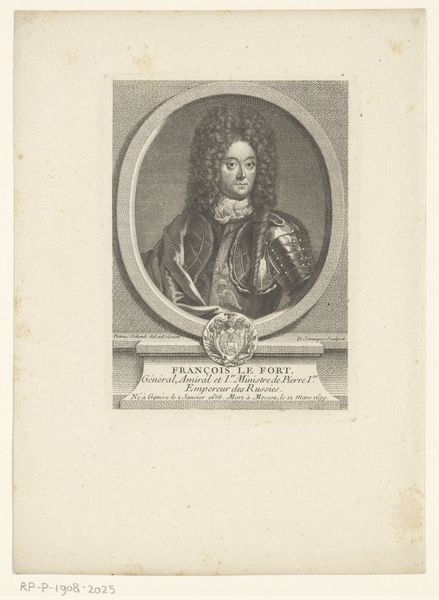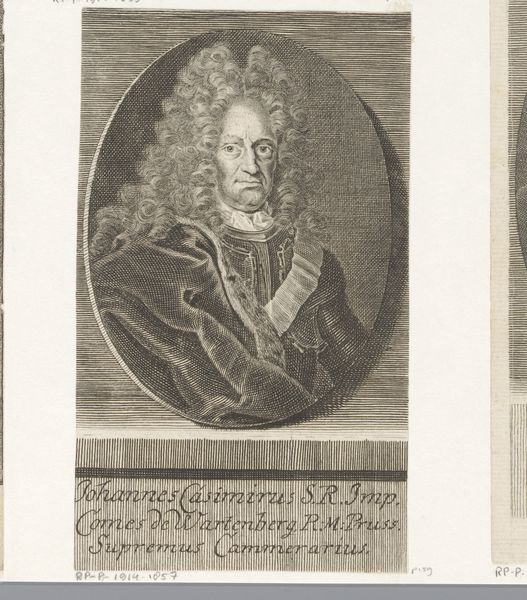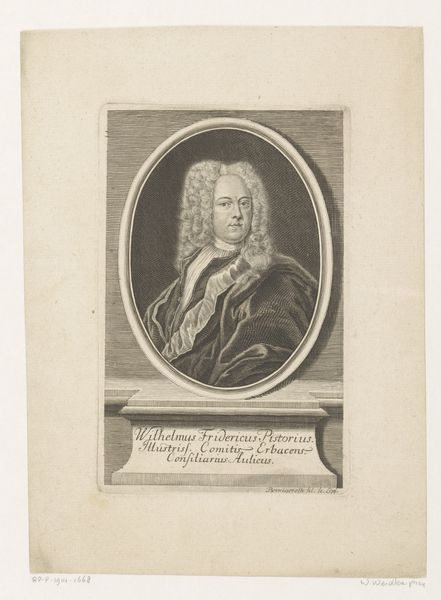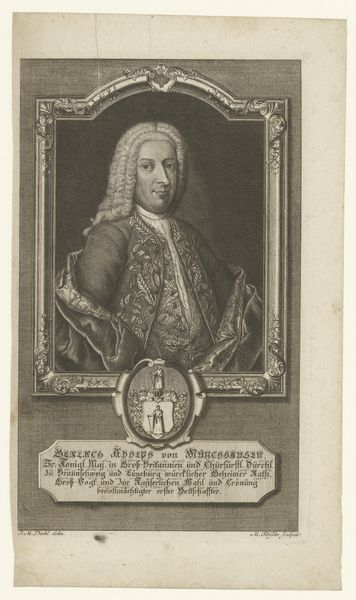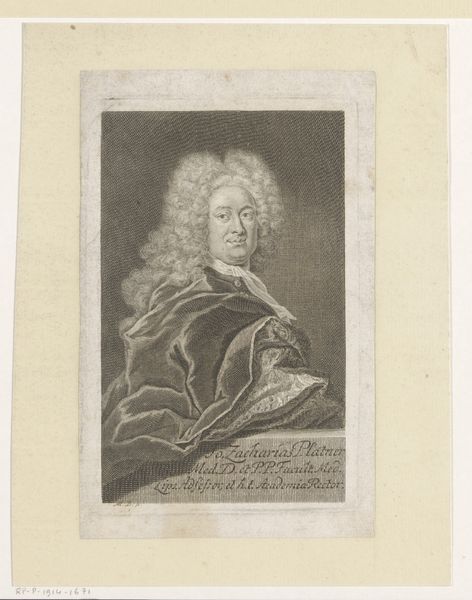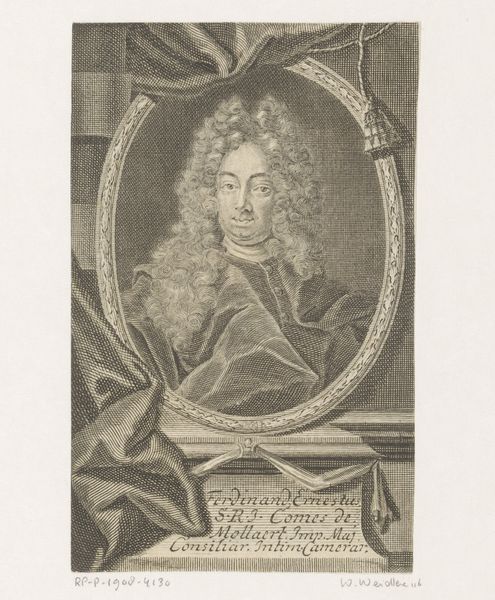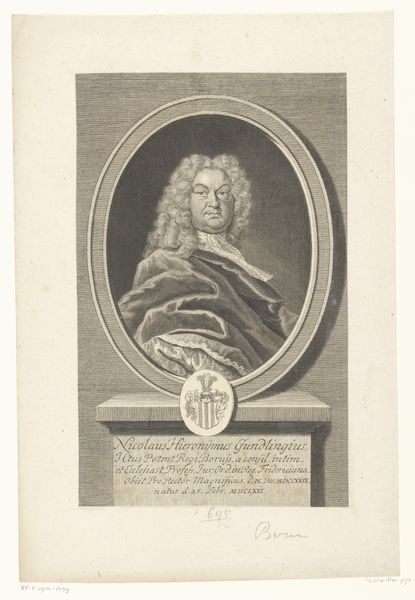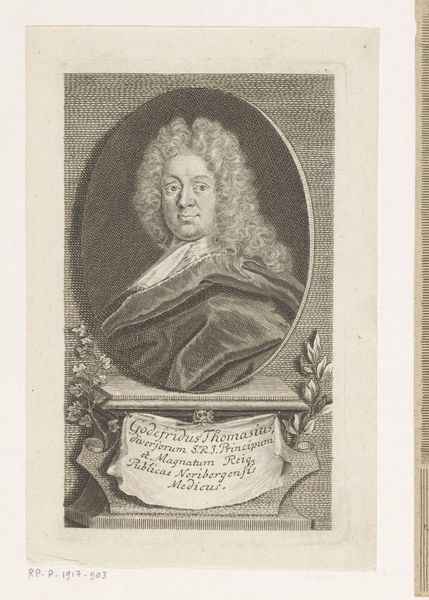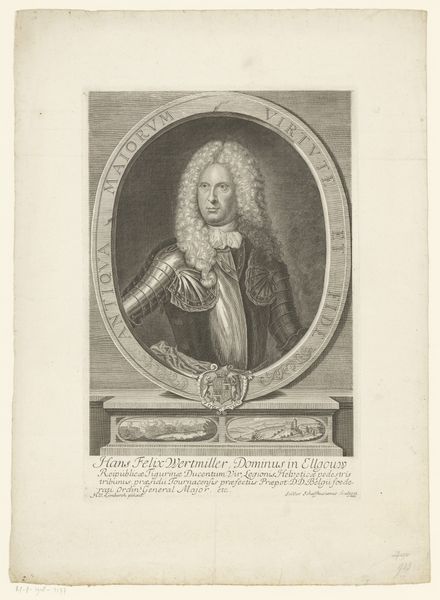
#
pencil drawn
#
photo of handprinted image
#
toned paper
#
light pencil work
#
pencil sketch
#
old engraving style
#
charcoal drawing
#
pencil drawing
#
pencil work
#
watercolor
Dimensions: height 158 mm, width 96 mm
Copyright: Rijks Museum: Open Domain
Curator: Looking at this intriguing image, we see a portrait identified as "Portret van Andreas Rüdinger," placing its creation sometime between 1703 and 1741. The portrait’s author is Gabriel Uhlich. Editor: My first impression is one of austerity, almost…spectral. The light is used in a stark manner, the thin hatching feels deliberate, economical even. What medium was used? Curator: It appears to be a pencil sketch on toned paper. The lines are indeed delicate, and the artist clearly relied on hatching and cross-hatching to achieve tonal depth. It feels representative of print-making techniques during the time. We see a highly constructed image intended to communicate intellectual rigor. Editor: I agree. Look at the details: the texture of the clothing, the heavy wig that signifies status. How interesting that this elaborate costume becomes, in effect, part of the material conditions of image making. The artist must account for the symbolic weight of these signifiers and the work involved to depict them properly. Curator: Absolutely. And consider the placement within an oval frame, almost like looking through a window—or a keyhole, perhaps suggesting hidden knowledge. Note also the inclusion of the inscription underneath the image; this reminds us of printed proclamations and public pronouncements. I'm especially intrigued by his gaze, a hint of superiority mingled with, maybe, resignation? The contrast makes you question what that symbolism represents. Editor: Perhaps a knowing acceptance of worldly falsities? Considering the printed phrase references "lies", it speaks to the performativity of identity and social presentation embedded within materiality itself. The textures, the constructed gaze – all become components that form this persona and all rely on physical artistry. Curator: Well observed. This analysis gives new depth to our understanding of not only Rüdinger, the philosopher and physician, but the societal frameworks influencing even the most seemingly straightforward portrait. Editor: Exactly. Considering the physical production expands our appreciation for the thought that was translated through material means. Curator: Thank you for highlighting that critical link!
Comments
No comments
Be the first to comment and join the conversation on the ultimate creative platform.

